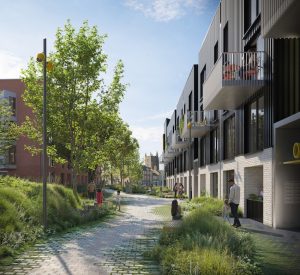‘Planning system in disarray’ – A look back at 2010 in property

RELUCTANT bank lending and a muddled planning system are just two of the challenges which the commercial property industry has been forced to confront during 2010.
This week on TheBusinessDesk.com, we gauge the views of the region’s property professionals to see what they felt were the key issues and challenges of the past 12 months. And return next week to discover what the industry thinks 2011 will bring.
Steve Kirby, valuation surveyor with advisors DTZ in Birmingham, said: “Bank property funding has remained a challenge in 2010. Funding is tight….this has resulted in banks adopting more aggressive action if customers breach banking covenants.
“Whilst the banks are willing to lend, tight criteria is restricting them to only consider well-let properties in prime locations. As a result, there has been a widening gap between what is considered prime and secondary assets.”

“Developers and contractors going into administration, the Comprehensive Spending Review and Government Ministers ‘shooting from the hip’ over the planning system have all meant development decisions have been difficult to make, with developers finding funding tricky and the planning system in a state of disarray.”
Ian Stringer, head of the Birmingham office of consultancy GVA Grimley, said: “A key issue for the market this year has been the demise of the nine regional development agencies and the significant funding they gave to regeneration.
“Other key issues have been the lack of debt finance for both new developments and standing investment stock, as well as the Comprehensive Spending Review’s impact, when there had already been no public sector activity in the very weak commercial property markets.
“The all-time low interest rates have had little beneficial effect because of lenders’ reluctance to lend on property assets at commercially viable rates and terms.”
Mark Swallow, head of the Birmingham office of consultancy Knight Frank, said: “Take up this year has outperformed the predictions and existing available office accommodation represents less than one year’s ‘good’ take up, circa 500,000 sq ft.
“When few developers have any plans to start on site, a sensible and pragmatic approach is required from the property sector and landlords in particular.”

“The last 12 months has seen occupier demand remain weak, which has meant developers have been reluctant to speculatively build new property, especially when there is a large amount of existing stock available, presenting different challenges to the sector.”
Margaret Hopkins, marketing director of Kingswinford-based portfolio manager London and Cambridge Properties, said: “At lease renewals and break options, tenants are increasingly looking for rent reductions and/or rent free periods to remain in a property and the challenge is to maintain the income flow on our portfolio of properties.
“Business rates payable on void properties continue to hinder development or refurbishment decisions. Short term lets to decrease rates liabilities and demolishment schemes of heavily dilapidated properties is more common.”

“Despite this, the office market has been remarkably resilient with sustained occupational demand from a range of sectors.
“Take-up during 2010 will be around 650,000 sq ft, in excess of the long-term average of 600,000 sq ft, demonstrating the market recognises wider economic challenges faced by occupiers and is able to react quickly.”
State of the Region: to take part in our major business survey, click here









